387. Part 4a. Photo Journal: North Adams: The Porches~ from hovel to hotel
Then on to The Porches, where we stay each year when we go to North Adams and catch the latest doings at Mass MoCA, the Massachusetts Museum of Contemporary Art.
North Adams was a factory town in the 1800’s, built on a canal. I am including history from the website because it will give you not only a background of the museum, but some insight into out country and manufacturing in our earlier years:
The history of MASS MoCA’s site spans more than two hundred years of economic, industrial, and architectural development that
traces the trajectory of industrialism in New England. The 13 acres of grounds in North Adams, Massachusetts, encompass a vast complex of 19th-century factory buildings and occupy nearly one-third of the city’s downtown business district. Listed in the National Historic Register, the site’s 26 buildings form an elaborate system of interlocking courtyards and passageways rich with historical association. Bridges, viaducts, elevated walkways, and red brick facades lend a distinct architectural ambiance to the complex, which throughout its history has been a place for innovation and fabrication using the most advanced knowledge and technology of the day.
Colonial Period (late 1700’s–mid 1800’s)
Manufacturing began on and around the site before the Revolutionary War, as its location at the confluence of the two branches of the Hoosic River was ideal for the diverse, small-scale industries of colonial times. By the late 1700’s and early 1800’s businesses at or near the site included: wholesale shoe manufacturers; a brick yard; a saw mill; cabinet-makers; hat manufacturers; machine shops for the construction of mill machines; marble works; wagon- and sleigh-makers; and an ironworks, which later forged armor plates for the Civil War ship, the Monitor.
Arnold Print Works (1860–1942)
In 1860, the print works O. Arnold and Company established itself on a portion of the site and installed the latest equipment for printing cloth. Large government contracts to supply fabric for the Union Army ensured that the business prospered, and during the next four decades Arnold Print Works became the largest employer in North Adams. By the end of the 1890s, 25 of the 26 buildings in the present-day MASS MoCA complex had been constructed, and by 1905, Arnold Print Works employed some 3,200 people as one of the leading producers of printed textiles in the world. Despite decades of success, falling cloth prices and the lingering effects of the great Depression forced Arnold Print Works to close its Marshall Street operation in 1942, consolidating to smaller facilities in neighboring Adams, Massachusetts.
Sprague Electric Company (1942–1985)
Later that year, the Sprague Electric Company bought the site. While largely leaving the building exteriors as they were, Sprague made extensive modifications to the interiors to convert the former textile mill into an electronics plant. Sprague physicists, chemists, electrical engineers, and skilled technicians were called upon by the U.S. government during World War II to design and manufacture crucial components of some of its most advanced high-tech weapons systems, including the atomic bomb.
Outfitted with state-of-the-art equipment, Sprague was a major research and development center, conducting studies on the nature of electricity and semi-conducting materials. After the war, Sprague’s products were used in the launch systems for Gemini moon missions, and by 1966 Sprague employed 4,137 workers in a community of 18,000, existing almost as a city within a city. From the post-war years to the mid-1980s Sprague produced electrical components for the booming consumer electronics market, but competition from lower-priced components produced abroad led to declining sales and, in 1985, the company closed its operations on Marshall Street.
MASS MoCA (1986–present)
In 1986, just a year after Sprague’s closing, the business and political leaders of North Adams were seeking ways to creatively re-use the vast Sprague complex. Williams College Museum of Art director Thomas Krens, who would later become Director of the Solomon R. Guggenheim Museum, was looking for space to exhibit large works of contemporary art that would not fit in conventional museum galleries. When Mayor John Barrett III suggested the vast Marshall Street complex as a possible exhibition site, the idea of creating a contemporary arts center in North Adams began to take shape.
Joseph C. Thompson, Krens’ colleague at the Williams College Museum of Art, was named founding director of MASS MoCA and spearheaded the project’s launch. Thompson led the campaign to build political and community support for the proposed institution, which would serve as a platform for the creation and presentation of contemporary art, and develop links to the region’s myriad cultural institutions. The Massachusetts legislature announced its support for the project in 1988. Subsequent economic upheaval in Massachusetts threatened the project, but broad-based support from the community and the private sector, which pledged more than $8 million, ensured that it continued to move forward.
The feasibility study for MASS MoCA was led by renowned architects Simeon Bruner of Bruner/Cott & Associates, Frank Gehry, Robert Venturi, and David Childs of Skidmore, Owings & Merrill. Bruner/Cott was named project architect in 1992 and, in 1995, the Cambridge, Massachusetts-based firm completed the master plan and final designs. They proposed exploiting the unparalleled scale and versatility of the complex’s industrial spaces, while establishing a dialogue between the facility’s past and the new life it would have as the country’s largest center for contemporary visual and performing arts.
As designs for the complex developed, so did the articulation of MASS MoCA’s mission. Originally conceived as an institution for the display of contemporary visual arts, MASS MoCA evolved, under Thompson’s leadership, into a center that would both present and catalyze the creation of works that chart new creative territory. MASS MoCA celebrated its opening in 1999, marking the site’s launch into its third century and the continuation of a long history of innovation and experimentation.
In 2000 MASS MoCA published a book titled From Mill to Museum about the history of the site and the museum. It included many beautiful photos of the complex before and after renovation by Nicholas Whitman. While the book is currently out of print, photos are available from Nick.
We have been coming to Mass MoCA since it opened; this is a place that calls to me. The town of North Adams has had its ups and downs. It was dependent on the Sprague factory to provide work for many of its denizens, and when the factory closed a depression ensued. The museum has helped to revitalize the area as not only n arts museum, but as a cultural center. Unfortunatley, the current economy had been influencing the financial situation again.
I bring up the background to give you another view of American life;
the factory worker was housed near the factory. Thus factory housing, a kind of ticky tacky row house model, still stands and serves to house people today. An area across from the former Sprague factory where rows of porched houses stood, weathered from time and wear, were converted into a chi-chi luxury hotel now known as The Porches. We are members of the National Trust for Historic Preservation and museum donors so we get a good package deal on our room. Understand that these buildings that were rundown hovels still maintain the factory worker feel–muslin curtains, English sinks, ebay purchased paint by numbers art. It’s a funky-elegant place. We lucked out and got the managers suite: private deck, living room 2 tv’s, built in washer-dryer in the bathroom (I almost flipped!), jacuzzi, a high tech kitchenette. A bottle of wine was waiting. Amenities include heated pool, gym, conference room, sauna, hot tub, and a great breakfast.
I have done several blogs on the area and the Mass MoCA exhibits over the years, they are linked under travel if you are interested. Unfortunately, I see that my former picture host cleaned out their servers and with that took my photos. I’ll upload a few here form an earlier trip so you can get a feel for the town.
Go on to the next post for Mass MoCA…
First, The Porches: The view across the canal is Mass MoCA.
|
sanssouciblogs wrote on Jul 25, ’09
Can you!!??? cool!
|
|
starfishred wrote on Jul 25, ’09
cool lovely great
|
|
ladywolf11 wrote on Jul 25, ’09
very nice thanks for sharing
|
|
caffeinatedjo wrote on Jul 25, ’09
Um, will you bring me one of those croisannts back? 😉
|
|
sanssouciblogs wrote on Jul 25, ’09, edited on Jul 25, ’09
caffeinatedjo said
When we first started going there, the croissants were fabulous; these are packaged. The bakery that supplied them years ago closed. Sign of the times. The fresh whole grain bread is to die for. There’s always a huge slab of cheddar, eggs, cereals, fruit, yogurt, juice, muffins. The pain au chocolat is gooood.
|
|
caffeinatedjo wrote on Jul 25, ’09
Man, I am gonna jump in y’all’s suitcase next time…um, will it fit someone who is 2 inches shy of 6 feet??? 😉
|

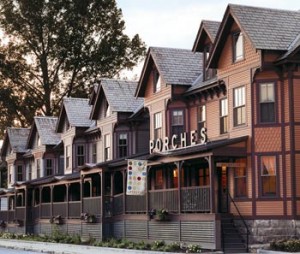
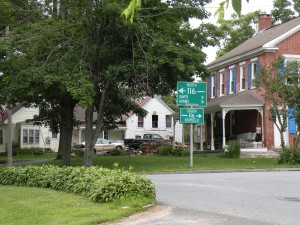

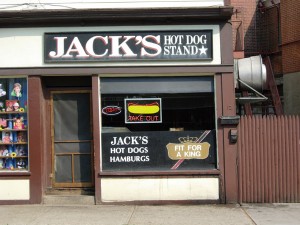

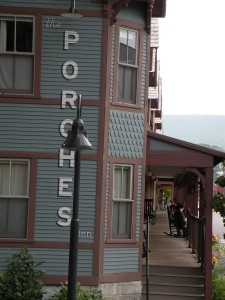
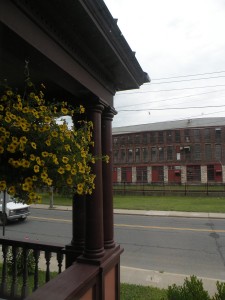

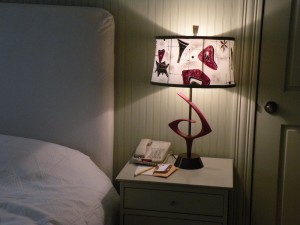

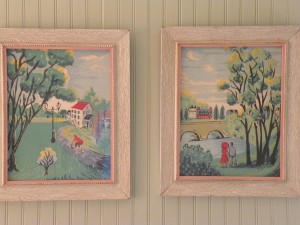
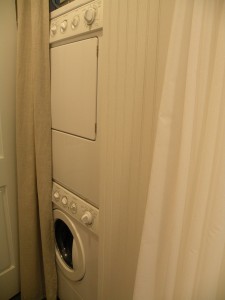
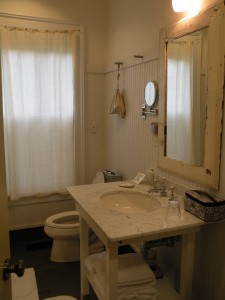

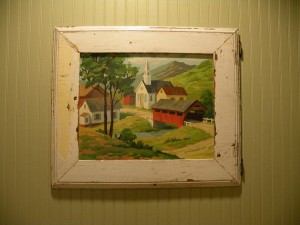
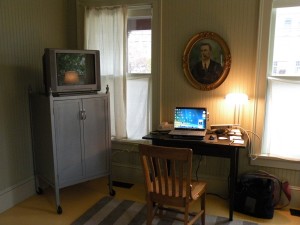
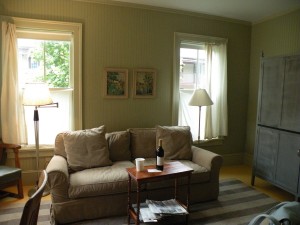
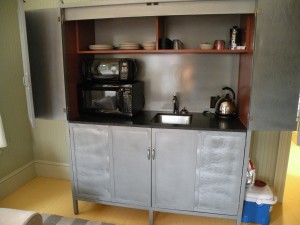
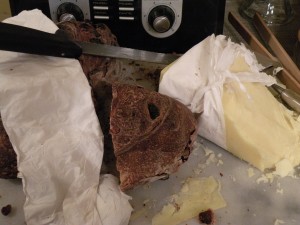
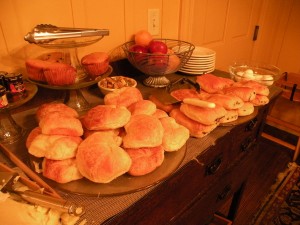
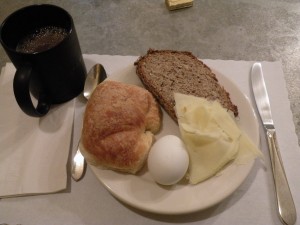

 Um, will you bring me one of those croisannts back? 😉
Um, will you bring me one of those croisannts back? 😉 
Comments
387. Part 4a. Photo Journal: North Adams: The Porches~ from hovel to hotel — No Comments
HTML tags allowed in your comment: <a href="" title=""> <abbr title=""> <acronym title=""> <b> <blockquote cite=""> <cite> <code> <del datetime=""> <em> <i> <q cite=""> <s> <strike> <strong>